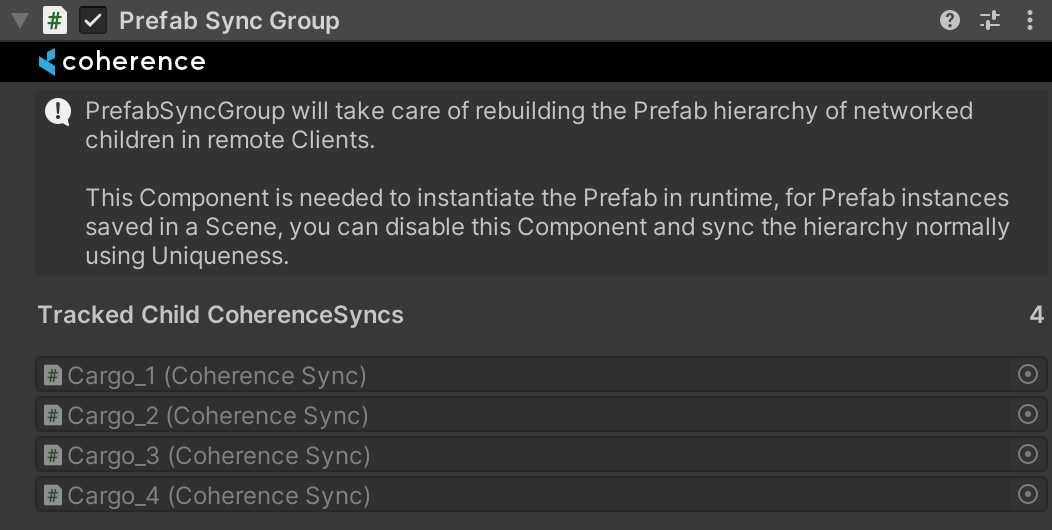PrefabSyncGroup
PrefabSyncGroup is a component to enable workflows where networked Prefabs are nested into each other. By adding this component, coherence will be able to track "which Prefab is nesting which one", and thus keep their structure and lifetime synchronised once the game is running.

The complexity of that is all taken care of for you. As a user, all you need to do is add PrefabSyncGroup to the root of the Prefab that is containing the others.
Read more and see an example in the dedicated page Nesting Prefabs at Edit time.
Was this helpful?

